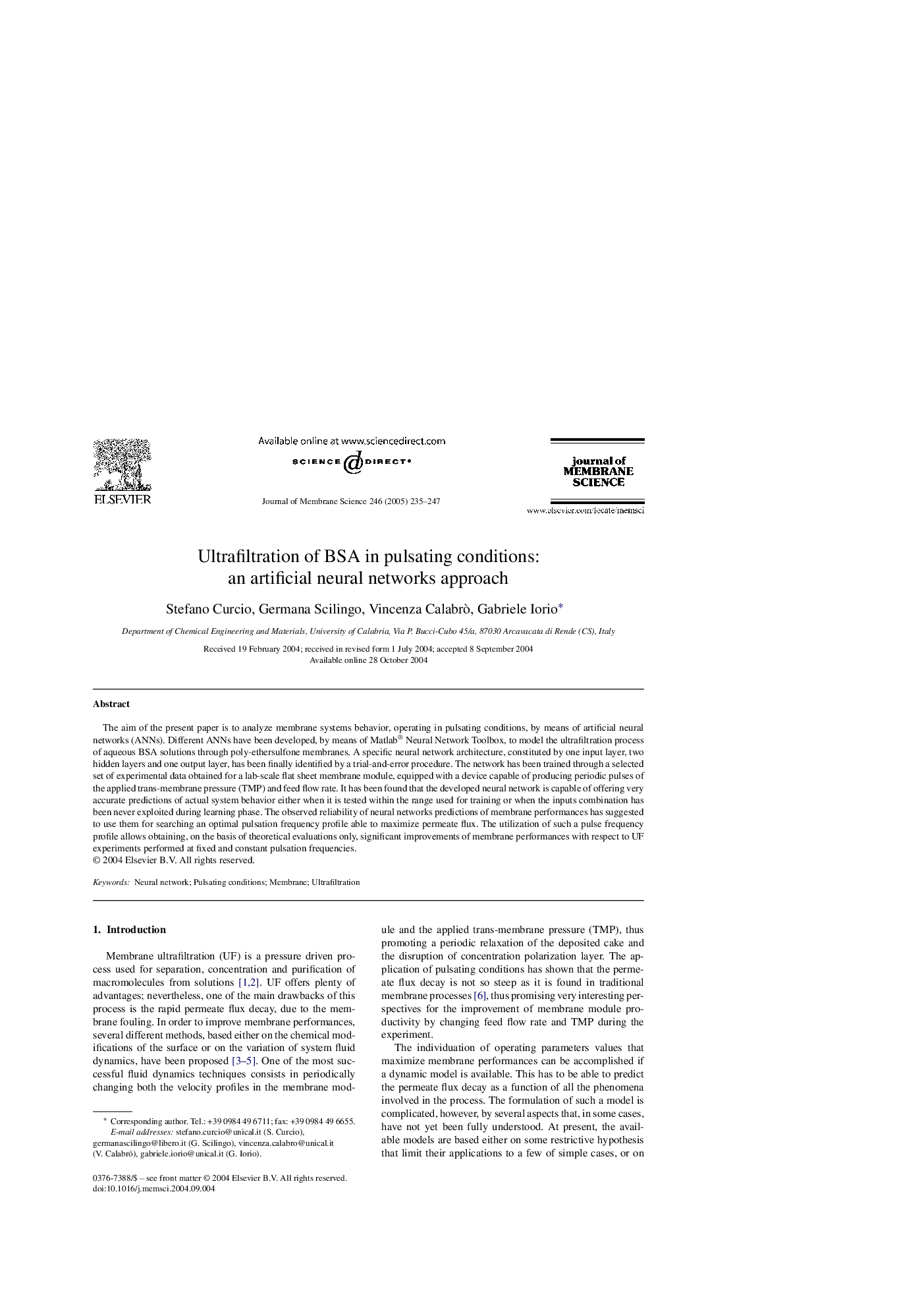| Article ID | Journal | Published Year | Pages | File Type |
|---|---|---|---|---|
| 10388952 | Journal of Membrane Science | 2005 | 13 Pages |
Abstract
The aim of the present paper is to analyze membrane systems behavior, operating in pulsating conditions, by means of artificial neural networks (ANNs). Different ANNs have been developed, by means of Matlab® Neural Network Toolbox, to model the ultrafiltration process of aqueous BSA solutions through poly-ethersulfone membranes. A specific neural network architecture, constituted by one input layer, two hidden layers and one output layer, has been finally identified by a trial-and-error procedure. The network has been trained through a selected set of experimental data obtained for a lab-scale flat sheet membrane module, equipped with a device capable of producing periodic pulses of the applied trans-membrane pressure (TMP) and feed flow rate. It has been found that the developed neural network is capable of offering very accurate predictions of actual system behavior either when it is tested within the range used for training or when the inputs combination has been never exploited during learning phase. The observed reliability of neural networks predictions of membrane performances has suggested to use them for searching an optimal pulsation frequency profile able to maximize permeate flux. The utilization of such a pulse frequency profile allows obtaining, on the basis of theoretical evaluations only, significant improvements of membrane performances with respect to UF experiments performed at fixed and constant pulsation frequencies.
Related Topics
Physical Sciences and Engineering
Chemical Engineering
Filtration and Separation
Authors
Stefano Curcio, Germana Scilingo, Vincenza Calabrò, Gabriele Iorio,
